Click here to see this email on the web |  | Friday, October 13th, 2023 | | How to Paint Landscapes: Details vs. Design
| By John Hughes | 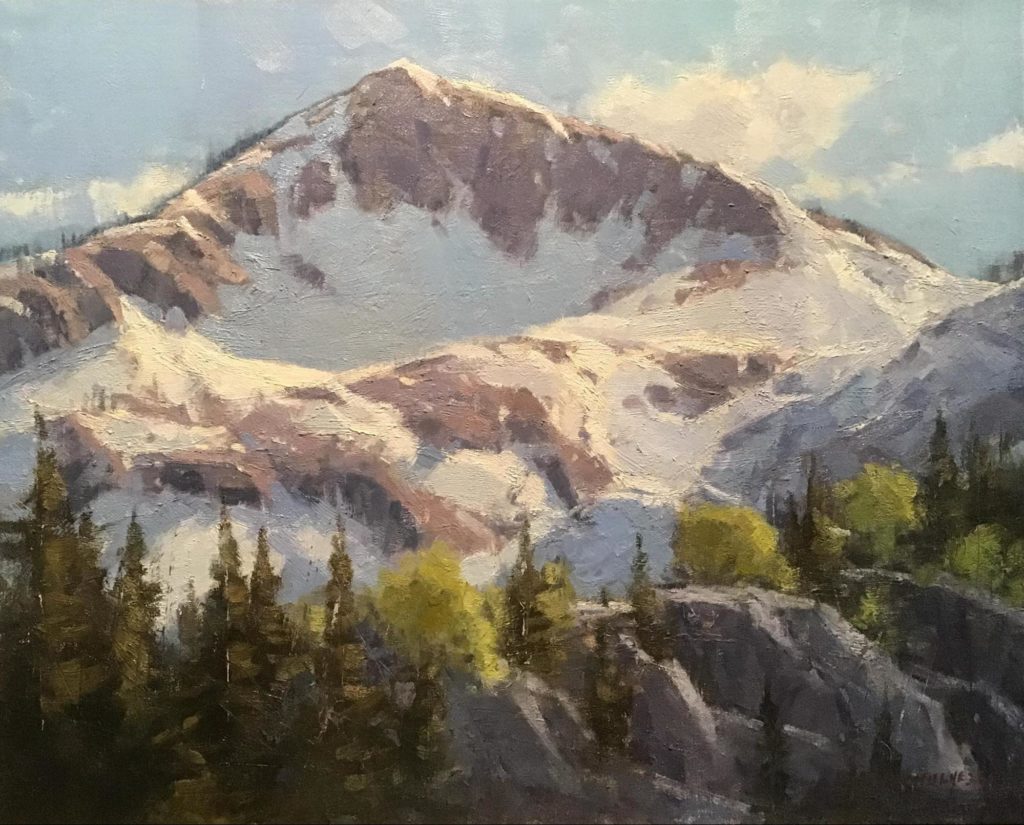 | John Hughes, "Mount Millicent," oil, 16 x 20 in. Field and studio painting
| How to Paint Landscapes, for Beginners
If you want to learn how to paint landscapes, you may wonder which is more important: details or design?
The answer to this question is design, but this doesn't mean that the details aren't important also. Details can go a long way in creating interest and charm in a work of art. There is really no right or wrong answer, but the number of details can certainly be overdone, and their relevance to a design can make or break a painting's success. Paintings that have this problem are easy to spot, if one has an eye for design!
It's not difficult to cross the line into the land of "too much detail" when you're learning how to paint landscapes, especially when those extras do nothing to enhance the overall work. Think of it this way: The details of a scene are really part of the design, so pitting these two against each other is not wise in the first place.
The reason that this was even brought up is because I have often been asked about it during painting demonstrations. The scenario usually goes something like this: I may be talking about the overall design relationships of a painting spot, and someone says, "Yeah, but what about the details?" This is usually an indicator to me that the person asking the question doesn't understand what really makes a painting work and is more concerned with the scene's surface allurements.
|  | John Hughes, Farm Field Study, oil, 10 x 12 in.
| By saying this I'm not attempting to slight people who ask the question. I understand where they are coming from, and knowing what concerns them helps me to be more effective as I instruct classes and workshops. The question actually turns out to be a good opener for a broader discussion on the underlying relationships of a painting, and how they are more important than details, especially in the beginning stages of the painting.
| — advertisement — |  | I will usually explain that details have a different level of importance to different people, whether they be artists or collectors. Some artists will opt for a lot of detail, while others will minimize them to practically none at all. The important thing is that they have a reason for being in the painting. Objects of all kinds may occupy the places you chose to paint, but does that mean they all should all be included in your paintings?
| 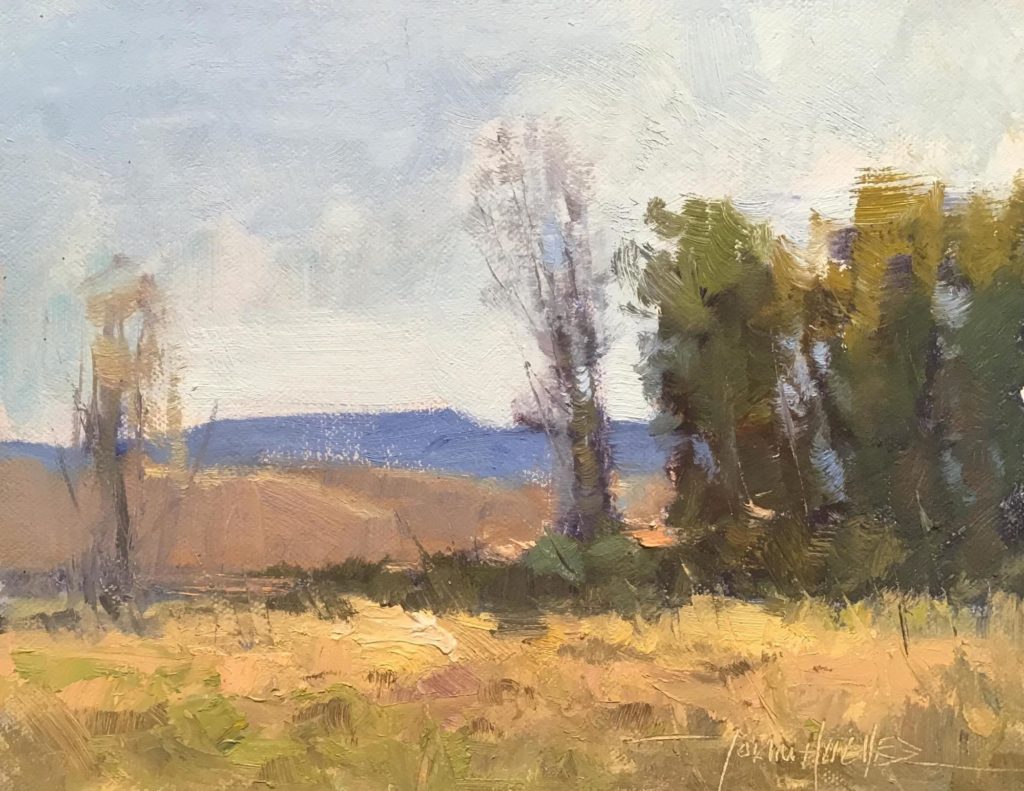 | John Hughes, Half Hour Study, oil, 6 x 8 in.
| As the old saying goes: "The devil is in the details!" And in the case of landscape painting, they can occupy too much of a painter's focus. The flip side is that they may occupy not enough attention . . . it's really a kind of balancing act! Knowing when to stop before putting too much in is a real skill, and finding that "sweet spot" is something all artists should aim for.
Over-focusing on details can be an impediment, especially for beginners, when it gets in their way of seeing the real design. It's easy to become seduced by the enhancement of a view, to the detriment of a simplified design. For this reason, it would be wise to forget about the details at first, and concentrate on arranging the motif through interesting patterns of lights, mid-tones, and darks, before getting too far into the weeds! By doing this, the details can selectively be integrated into the design without there being any confusion as to which is more important. An easy way to remember this is (SDSD), which stands for Simplified Design, Selective Details.
The order of these two principles is instructive as well. When you first arrive on the site of your next painting, if you keep this in mind you will be able to concentrate your efforts on the important things first. When you do get to the details, you will be much more in tune with how much is too much, and how much is too little! This is because you will be thinking about the all-important abstract design right from the start.
| 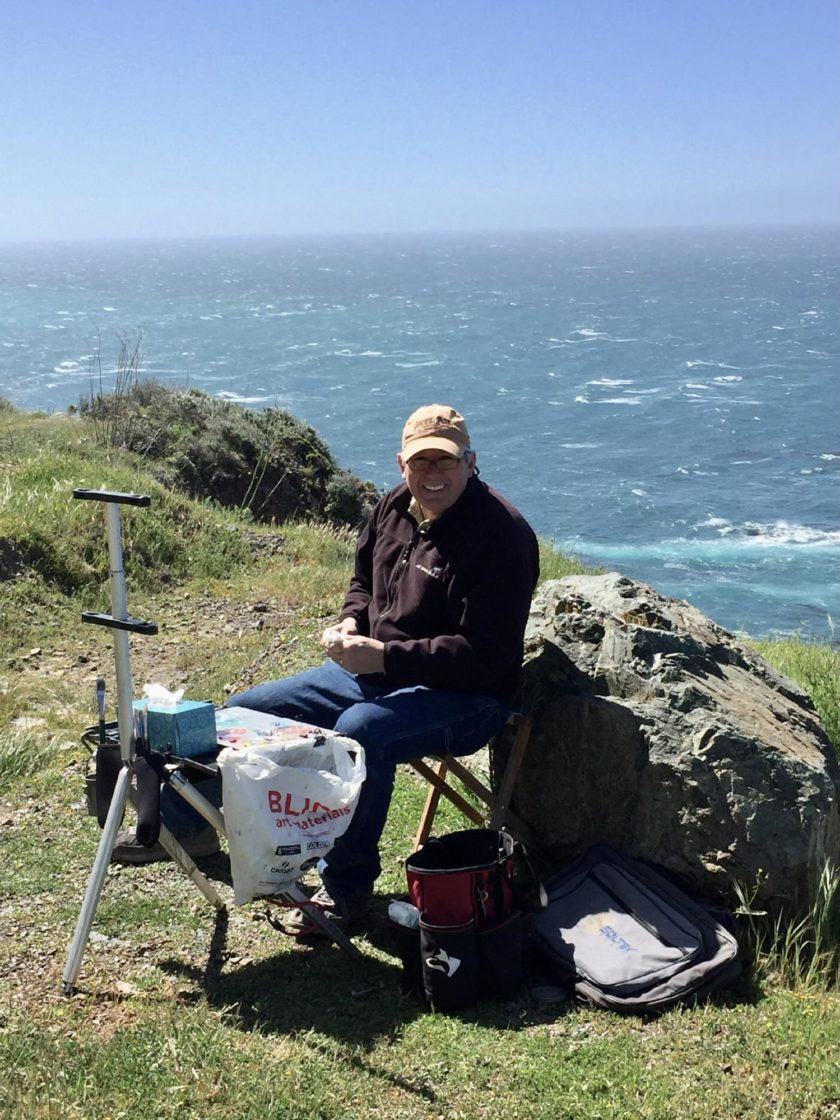 | John Hughes painting on location near Carmel, California
| It has been said that painting a canvas is a lot like building a house: First comes the foundation, then the framing, plumbing, electrical, and drywall, before any of the finish such as cabinets, molding, paint, and carpeting are installed. The reason for this is obvious, but what are the first things a potential buyer usually sees and becomes smitten by? Right, the last items on the list!
| 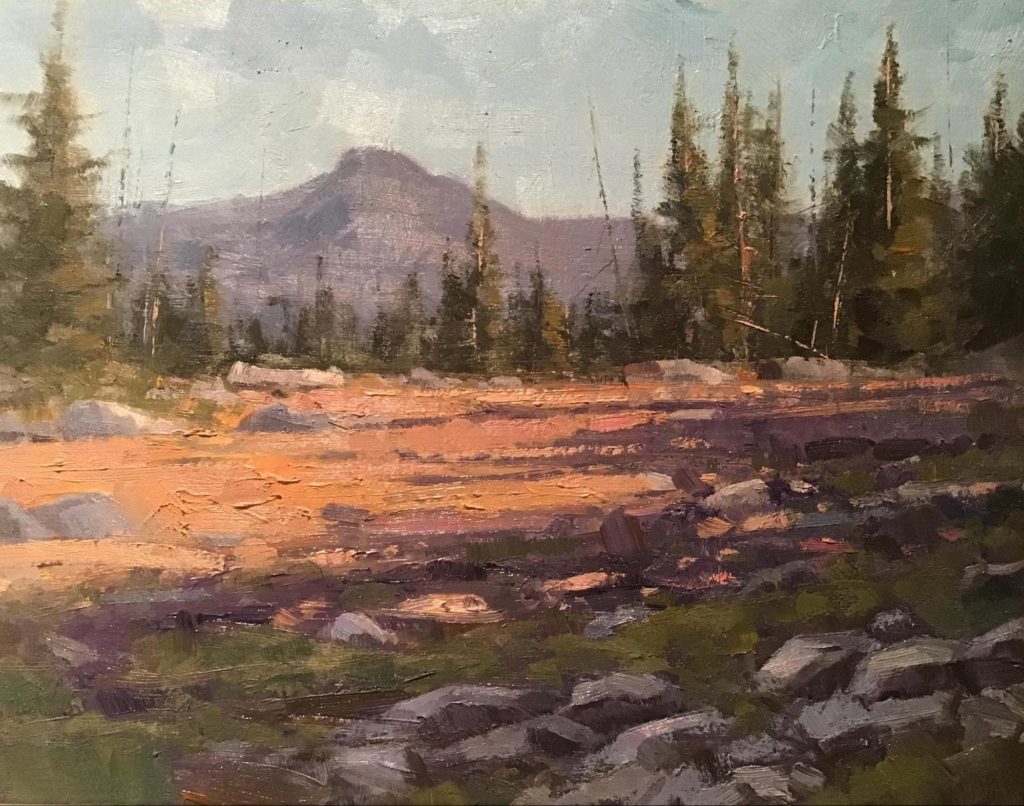 | John Hughes, Class Demo on how to paint landscapes, oil, 8 x 10 in.
| Painters, in this sense, are often just like home buyers. Sometimes they can get derailed by the details of nature, before the possibilities of design enter their mind!
So keep the order of importance in focus right from the start (SDSD), and you will be in a good position to execute effective landscapes. This will help you build on a firm foundation of value patterns that work together to form a more interesting whole. Thinking big first, before working your way into the finishing touches, will be more rewarding and more effective!
| 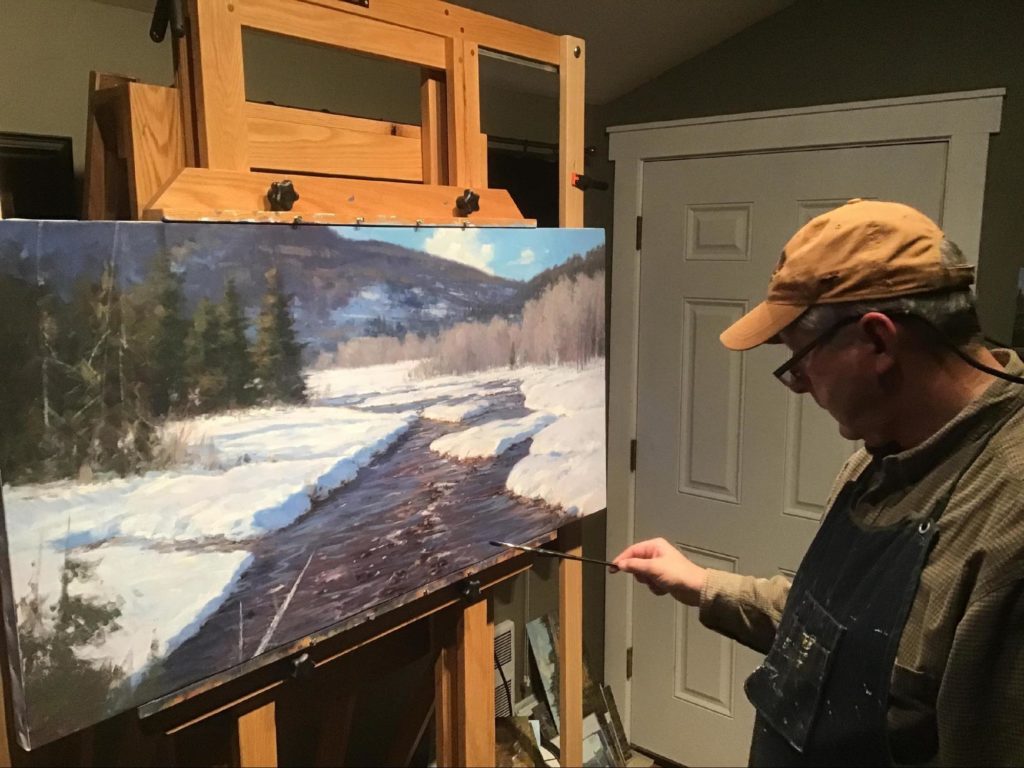 | John Hughes painting in his studio.
|
|
|
|
— advertisement — |  | NPR Covers Fall Color Week | 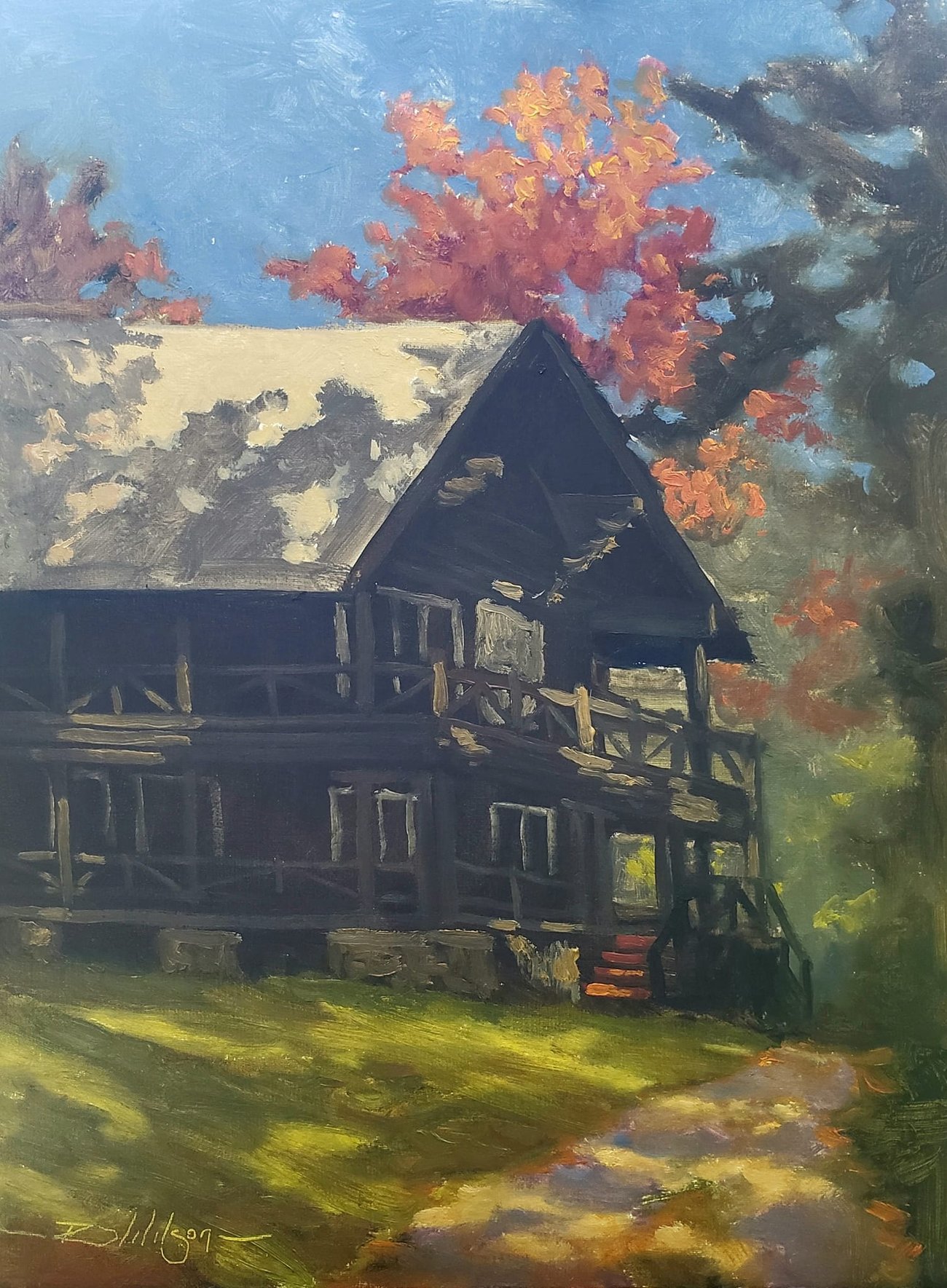 | One of Rick Wilson's plein air paintings from Fall Color Week with Eric Rhoads, 2023 | At the recent Publisher's Invitational, Fall Color Week, with Eric Rhoads, NPR Community Engagement Reporter Amy Feiereisel said she found our group while at Middle Saranac Lake. There, she took the time to interview Rick Wilson - one of our artists and resident musicians - and Simonne Roy, who's from Central Pennsylvania.
You can read the full interview at www.northcountrypublicradio.org and learn how you can join us for a newsworthy adventure of painting with friends for a week in the Adirondacks at publishersinvitational.com. The next "summer camp for artists" is June 8-15, 2024 and it's not too early to save your spot. | — advertisement — | 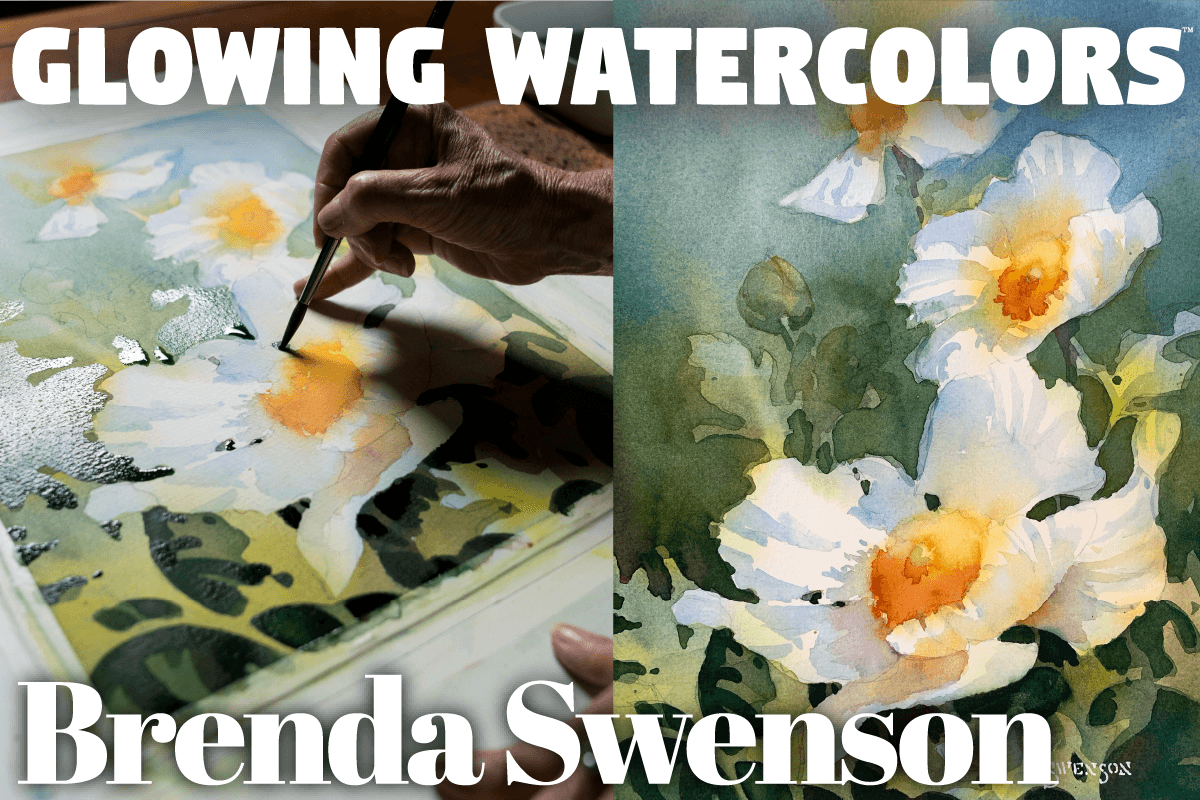 |
|
| | |
|
Plein Air Today is committed to protecting and respecting your privacy. We do not rent or share your email address. By submitting your email address, you consent to Streamline Publishing delivering regular email issues and advertisements. To end your Plein Air Today e-mail subscription and associated external offers, unsubscribe here. To learn more about Streamline Publishing events, products, and offerings visit StreamlinePublishing.com
Copyright 2023 Streamline Publishing, Inc. All rights reserved.
PleinAir® Magazine and Plein Air Today® are registered trademarks of Streamline Publishing, Inc. |
|
|
|
|
Comments
Post a Comment